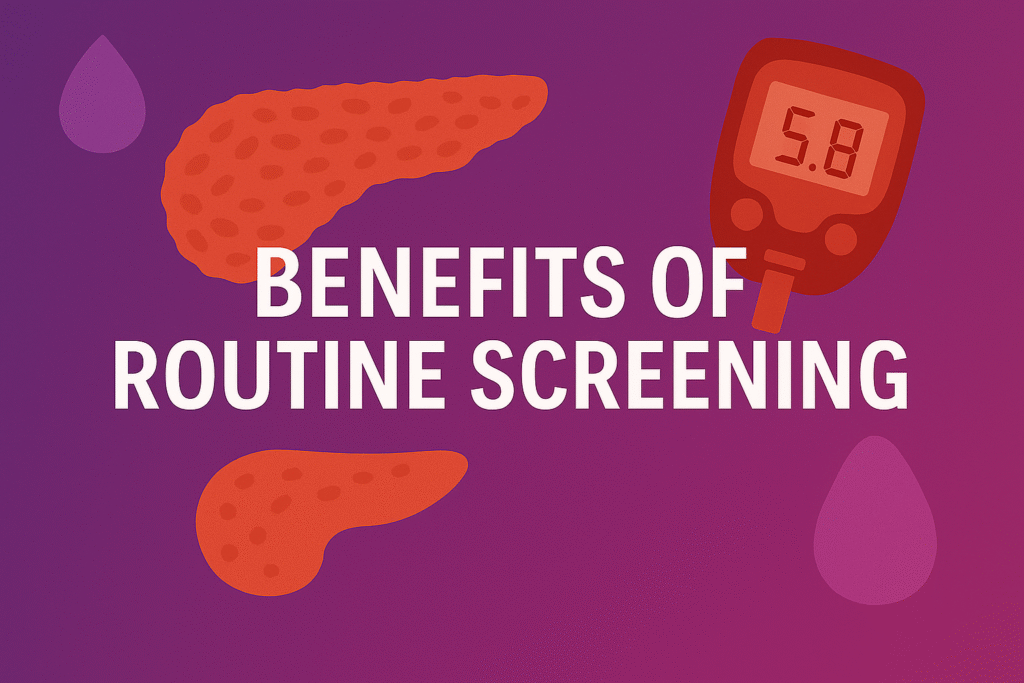Introduction
The benefits of routine screening of a healthy population, is a way of capturing those at risk of having a potential health condition or disease. Routine screening is done by a competent professional following consent and informed choice from the individual, so that if concerns are identified, they can be treated or investigated further. The chosen population for the screening is identified in a certain category, so that by having screening it might benefit them.
The UK National Screening Committee advises the NHS on what routine screening is to be offered, as populations are identified from audits and surveys captured from certain populations at risk and identified.
Risks of routine screening
Routine screening is quite often done on a mass scale which can lead to inaccuracies, such as a false positive or false negative result, with an individual thinking they do not have the condition and do, or vice versa the person thinks they have the condition and do not.
Inaccurate results could cause upset and distress in individuals, plus put a strain on the NHS services who are already known to be struggling.
Benefits to routine screening
Individuals who have been found to have a disease or health condition, can get treatment to prevent their condition from getting worse or prevent it from developing further. By getting earlier treatment than they would have, due to not having awareness of having a disease or health condition, the person might be able to be fully treated which benefits their health long term, plus, it also stops the NHS having further strain put on it at a future date. Routine screenings can also prevent deaths from Cancers such as bowel, breast and cervical, plus, Abdominal Aortic Aneurysms (covered further down in blog).
Types of routine screening
Examples of routine screening that might benefit identified populations are:
Screening in pregnancy can identify Sickle Cell and Thalassaemia, which is a name for a group of conditions that affect the red blood cells causing Anaemia. When an individual is Anaemic their blood struggles to carry sufficient oxygen around the body, making the individual tired, which can also affect the baby, but can easily be rectified with iron tablets.
Down Syndrome screening is offered between 10-20 weeks of pregnancy using a blood test and ultrasound scan. Individuals with Down Syndrome carry an extra chromosome which means that there will be a certain level of learning disability. Pregnant ladies then have an informed choice of whether to continue with their pregnancy.
Additional routine screening for pregnancy is a 20-week scan to check that the baby is developing properly.
Diabetic eye screening if pregnant with Diabetes Type 1 or Type 2, can be done at a local eye testing store to make sure the female has not got Retinopathy which can cause sight loss. If Retinopathy is noted the individual will need support of how to manage their Diabetes better, as it cannot be cured. Treatment for the condition if it has progressed is laser treatment, regular eye injections, an implant into the eye or surgery to remove the scar tissue caused by Retinopathy, to prevent the sight loss getting worse, with routine screening being a positive step to identify changes early.
Diabetic eye screening for anyone from the age of twelve who has Diabetes, to check for early signs of Diabetic Retinopathy.
Screening newborn babies physically, plus checking their hearing and doing a blood spot to check whether the baby has any rare conditions. Routine screening enables the baby to be treated quickly to prevent further issues.
Cervical screening (smear test) for women aged between 25 to 64, to check that the cells are healthy in the cervix, which is offered every 3 years for 25 to 49-year-olds, then every 5 years for individuals aged between 50 to 64.The test is performed by a Nurse or Doctor who will be chaperoned. A smooth tube-shaped tool is inserted into the vagina, opened and using a soft brush a small sample is taken; it is then removed. There can be a bit of blood spotting, but this generally lasts for a couple of hours. You will then be notified once the results have returned with advice if needed.
Breast screening for women aged 50 to 70, although women over seventy can self-refer themselves; this is to detect early signs of Breast Cancer. The screening is done via a Mammogram, a machine where you will need to remove your top clothes for your breast to be scanned between two metal plates to identify any changes. You are notified if a follow up appointment or any changes are noted.
Bowel Cancer screening for all aged between 50 and 74, which is every 2 years, with individual’s being sent a home kit, with the individual then sending a poo in for testing. You are then sent a letter of what your results are and whether any further treatment is needed.
Abdominal Aortic Aneurysm is a large swelling in the abdominal aorta (the largest artery in the body) screening for men when turn 65, although after this age they can self-refer. If this is detected surgery will be needed to prevent the artery from rupturing which if not done could be life threatening leading to death.
Conclusion
Although there can be mistakes when doing routine screening by mass, the benefits outweigh the negatives. If a false negative were to be given this would be followed up to reassure the individual, but if a condition is identified early, the individual can be treated to prevent it developing further and can enhance in most cases the individual’s quality of life, or life expectancy.
For more interesting reads, head over to https://asclepius-ohs.co.uk/blog
References:



